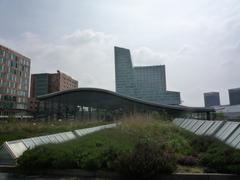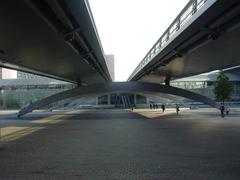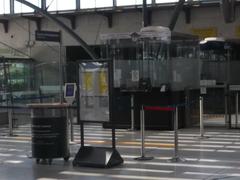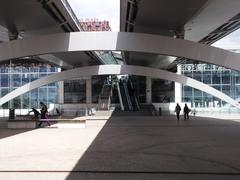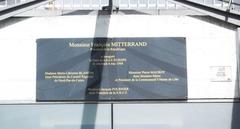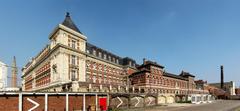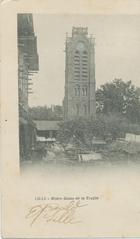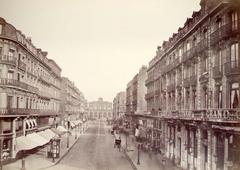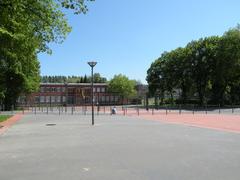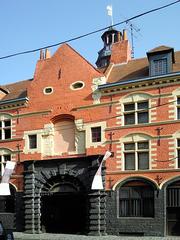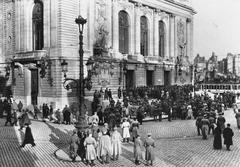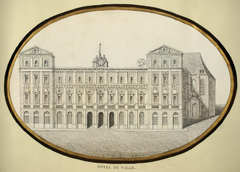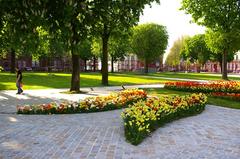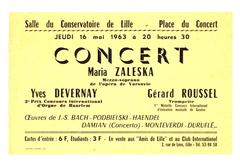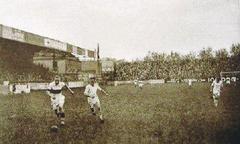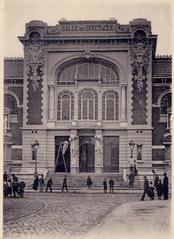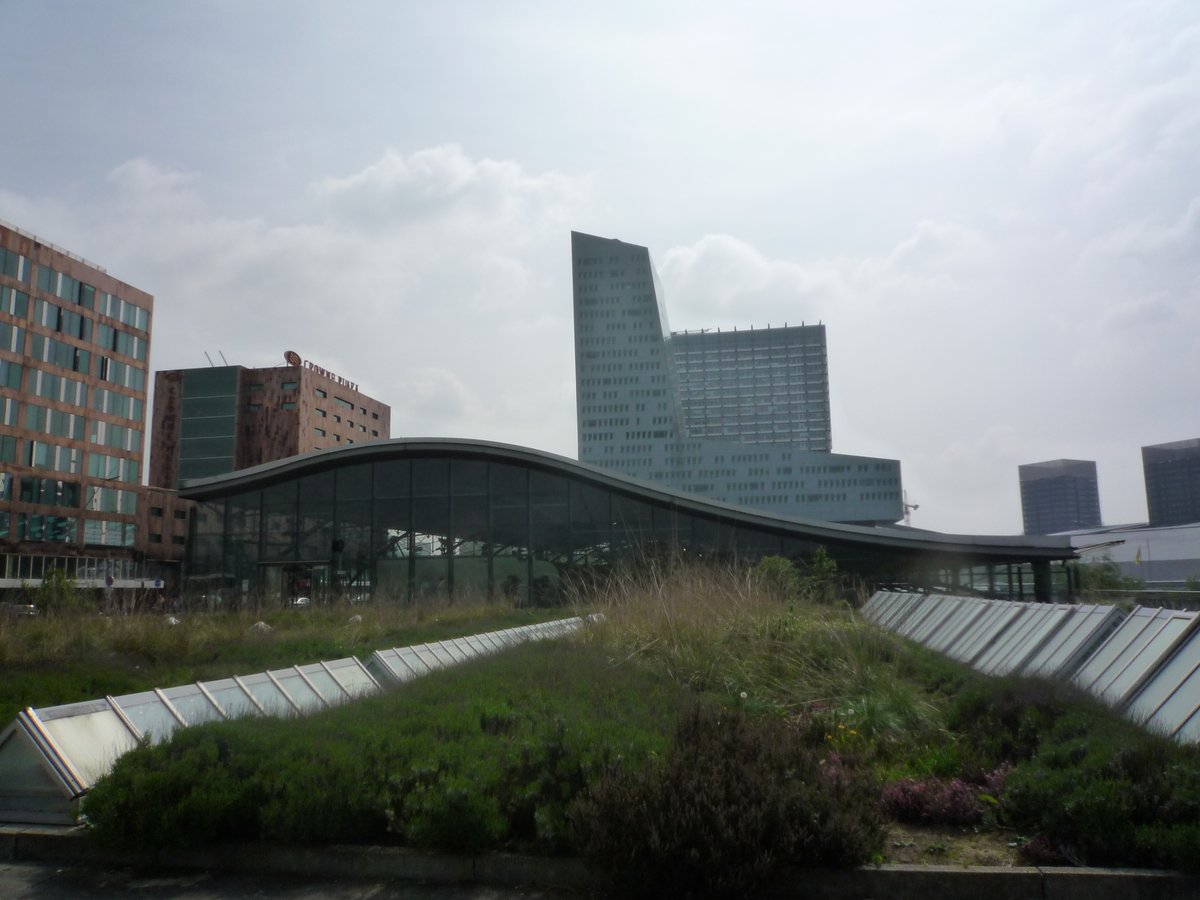
Lille-Europe Railway Station Visiting Hours, Tickets, and Travel Guide
Date: 14/06/2025
Introduction
Lille-Europe Railway Station is a modern architectural landmark and a pivotal transportation hub in northern France. As a central node in the European high-speed rail network, it connects Lille to major cities such as Paris, Brussels, and London via Eurostar, TGV, and Thalys services. Built as part of the Euralille urban renewal project in the 1990s, the station reflects Lille’s transformation from an industrial center to a vibrant, cosmopolitan city. Its glass facades, expansive concourse, and integration with shopping, dining, and cultural attractions make Lille-Europe much more than a transit point—it is the gateway to both the city’s rich heritage and dynamic contemporary life (Lille Tourism; ETRR SpringerOpen).
Contents
- Historical Background and Urban Transformation
- Station Architecture and Design
- Visitor Information: Hours, Tickets, Accessibility
- Facilities and Services
- Transport Connections and Transfers
- Nearby Attractions and Cultural Sites
- Practical Travel Tips
- Frequently Asked Questions (FAQ)
- Visual Highlights
- Summary and Visitor Recommendations
- Official Sources and Further Reading
Historical Background and Urban Transformation
Origins and Development
Lille-Europe Railway Station opened in 1994 to serve high-speed rail lines linking France, Belgium, and the UK following the Channel Tunnel’s completion. Its construction was a key element of the Euralille project, which reimagined a neglected zone into an international business district and transport hub. The station’s location on reclaimed land underscores Lille’s strategic bid to become a crossroads of northern Europe, connecting Paris, Brussels, and London within 1.5 hours by train (HatchJS; Dreaming in French).
Euralille and City Integration
Led by architect Rem Koolhaas, the Euralille project transformed the area between Lille’s historic core and its suburbs into a vibrant mixed-use district. Lille-Europe station serves as the centerpiece, physically and symbolically linking the city’s past to its future. The project’s emphasis on transport, commerce, and urban life exemplifies modern European city planning (ETRR SpringerOpen).
Socio-Economic Impact
Lille-Europe’s emergence as a major rail interchange attracted businesses, international organizations, and new residents, driving economic revitalization. The station’s integration with Euralille fostered new office towers, hotels, residential buildings, and retail spaces, establishing Lille as a regional powerhouse for commerce and culture.
Station Architecture and Design
Lille-Europe’s design is a striking example of late 20th-century modernism. Expansive glass and steel facades create a light-filled concourse above the platforms, contrasted by the ornate historic Lille-Flandres station nearby. The station’s linear, transparent structure reflects Lille’s ambition as a forward-looking European city (golab.bsg.ox.ac.uk; repository.tudelft.nl).
Key features include:
- Elevated main concourse above street-level platforms
- Spacious waiting areas with natural light
- Direct connections to the Euralille shopping center and business district
- Jean Pattou’s “Piranèse 2000” fresco in the main hall
The station’s architectural transparency is symbolic of Lille’s openness and connectivity to Europe.
Visitor Information: Hours, Tickets, Accessibility
Visiting Hours
- General Hours: Open daily from 5:00 AM to 12:30 AM, accommodating early and late train services.
(Check official sources for updates during holidays or special events.)
Ticketing
- Where to Buy:
- Online via SNCF Connect, Eurostar, or Thalys websites
- Mobile apps
- Ticket counters and self-service machines in the station
- Advance Booking: Strongly recommended for high-speed and international trains to secure best prices and availability.
- Support: Multilingual staff and machines (French, English, Dutch) assist travelers (Eurostar).
Accessibility
- Step-free access via elevators and escalators
- Accessible toilets and waiting areas
- Tactile paving and audible announcements
- Assistance services for travelers with reduced mobility (book in advance or request on arrival)
- Clear, bilingual signage throughout the station (ShowMeTheJourney)
Facilities and Services
- Ticketing and Information Desks: Staffed counters, self-service ticket machines, and information points for real-time travel assistance.
- Waiting Areas: Ample seating; Eurostar Premier lounge available.
- Food & Drink: Cafés, snack bars, and Relay newsagents for refreshments and essentials. The Euralille shopping center offers expanded options.
- Toilets: Public and accessible toilets (small fee may apply).
- Left Luggage: Secure baggage storage for short- and long-term use (Seat61).
- ATMs & Currency Exchange: ATMs inside the station; currency exchange nearby.
- WiFi: Free station-wide WiFi.
- Car Hire, Taxis, Parking: Rental desks, taxi ranks, and direct-access parking available.
- Security: CCTV, security staff, and juxtaposed border controls for UK-bound Eurostar passengers (Wikipedia).
Transport Connections and Transfers
- High-Speed Trains: Eurostar, TGV, Thalys, Intercity services to Paris, London, Brussels, Amsterdam, and more.
- Regional Trains: TER services to local and regional destinations.
- Metro & Tram: Direct access to Metro Line 2, trams to Roubaix and Tourcoing, and multiple bus routes.
- Coach Services: Long-distance buses (BlaBlaBus, Flixbus) and airport shuttles (B-Europe).
- Transfers to Lille-Flandres:
- 400–500 meters by covered walkway (5–10 minutes walk)
- One stop on Metro Line 2
- Tram connection
Nearby Attractions and Cultural Sites
- Vieux Lille (Old Town): Cobblestone streets, Flemish architecture, boutiques, and cafés—10-minute walk or quick metro ride.
- Grand Place: Central square with historic facades, shops, and restaurants.
- Palais des Beaux-Arts: Major fine arts museum within easy reach.
- Euralille District: Modern business district with shopping, dining, and the Tour de Lille skyscraper.
- Other Sights: Chamber of Commerce and its Belfry, Jardin des Géants, Parc Matisse.
For walking tours of Lille’s historical buildings, see GPSMyCity.
Practical Travel Tips
- Advance Ticket Booking: Essential for Eurostar and TGV, especially during holidays and weekends.
- Local Transit Passes: Obtainable for unlimited metro, tram, and bus rides.
- Luggage: Use left-luggage lockers for convenience when exploring the city.
- Security: Remain vigilant; Lille-Europe is monitored and secure.
- Language: Most staff speak English; signage is bilingual.
Frequently Asked Questions (FAQ)
Q: What are the station’s opening hours?
A: Daily from 5:00 AM to 12:30 AM (hours may vary on holidays).
Q: How do I buy tickets?
A: Online, at station counters, or via self-service machines; advance booking advised for international trains.
Q: Is the station accessible for travelers with disabilities?
A: Yes, with step-free access, elevators, tactile paving, and assistance services.
Q: How do I transfer to Lille-Flandres station?
A: Walk 400–500 meters via covered walkway, or take Metro Line 2 (one stop).
Q: Are there left luggage facilities?
A: Yes, lockers and staffed baggage storage are available.
Q: What attractions are close by?
A: Vieux Lille, Grand Place, Palais des Beaux-Arts, Euralille shopping and business district.
Visual Highlights
Alt text: Lille-Europe station’s modern glass facade and main entrance. Alt text: Spacious, light-filled concourse with clear signage and seating. Alt text: Platforms 43 and 45 with high-speed trains. Alt text: Map showing Lille-Europe’s location relative to Lille-Flandres and city landmarks.
For a virtual tour, visit the ShowMeTheJourney Lille-Europe page.
Summary and Visitor Recommendations
Lille-Europe Railway Station exemplifies Lille’s fusion of modern architecture, urban regeneration, and efficient European connectivity. Since its inauguration, the station has anchored economic growth and cultural exchange, thanks to its integration with the Euralille business district and city-wide smart initiatives. Visitors enjoy step-free access, comprehensive amenities, and seamless transfers to regional and international destinations. Its proximity to historic quarters and cultural sites invites exploration of Lille’s rich heritage alongside its contemporary urban life. For the best experience, plan ahead with advance ticket booking and use travel apps for real-time updates. Lille-Europe remains the gateway to a city where tradition meets modernity (Seat61; Eurostar).
Official Sources and Further Reading
- Lille-Europe Railway Station: Visitor Guide, Historical Significance, and Urban Transformation, 2023, Various Authors
- Euralille Urban Development and Station Impact, 2017, SpringerOpen
- Lille-Europe Railway Station Architectural Case Study, 2020, Golab BSG Oxford
- Lille-Europe Railway Station Design and Urban Role, 2019, TU Delft Repository
- Travel and Accessibility Information, 2023, Rick Steves Travel Forum
- Lille-Europe Station Facilities and Layout, 2024, Seat61
- Eurostar Travel Information, 2024, Eurostar Official Site
- Connectivity and Transport Links, 2023, B-Europe Transport Guide
- Lille-Europe Station and Eurostar Border Controls, 2023, Wikipedia
- Lille’s Historical Buildings Tour, GPSMyCity
- Dreaming in French: Things to Do in Lille
- ShowMeTheJourney Lille-Europe page
For real-time travel updates and personalized assistance, download the Audiala app. Follow Lille tourism and rail operators on social media for the latest information and inspiration for your trip.
